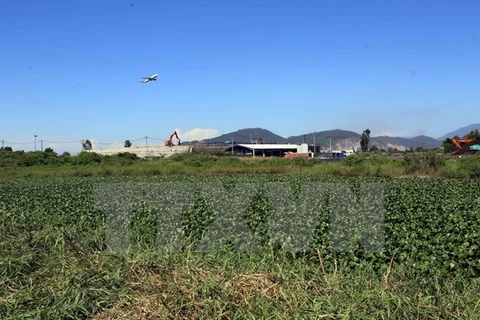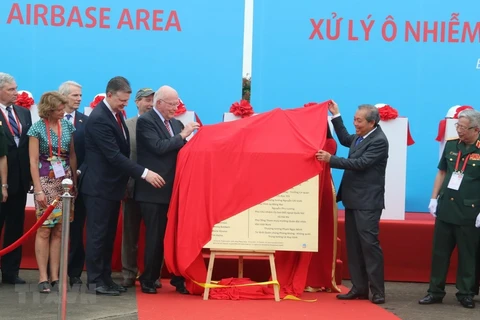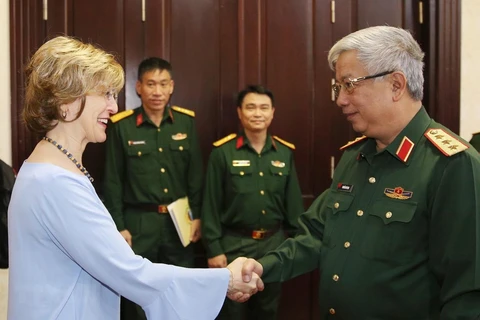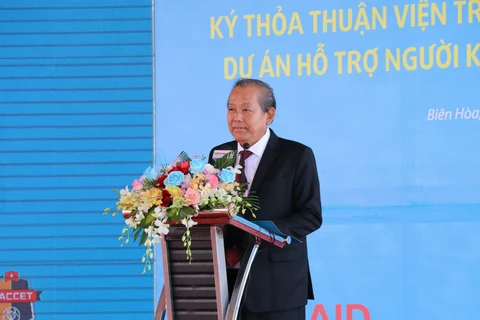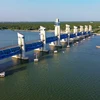Hanoi (VNA) – The soil washing technology has proved to be effective in treating dioxin-contaminated soil at Bien Hoa Airport in the southern province of Dong Nai, experts said at a seminar held in Hanoi on December 8.
The technology was trialed by the Centre for Technology Environmental Treatment’s Chemical Command under the Ministry of Defence and Japan’s Shimizu Corporation during 2019-2020.
Shimizu Corporation has remediated millions of tonnes of contaminated land in Japan using this technology. However, due to the high level of dioxin contamination at Bien Hoa airbase, the company said it was necessary to try the technology out to evaluate its efficiency.
The firm shipped a mobile-type soil washing plant from Japan, and installed it at Bien Hoa airbase in November 2018. The plant began operation in March 2019. Soil washing was piloted on various soil samples in different dioxin concentrations, and was successful in removing 95 percent of the dioxins in feed soil.
Shimizu’s soil washing is a water-based process utilizing “physical separation” based on mining and mineral processing principles for removing a broad range of organic and inorganic contaminants from soils. Hydrocyclone and flotation are the most important separation methods used in soil washing process. Hydrocyclone separates the fine soil from larger sand particles by the centrifugal force. Larger sand particles end up in the underflow; fine/light particles (silt, clay, organic) and water end up in the overflow.
As soil washing is low-cost and imposes little environmental burden compared to thermal treatment, experts said it should be considered to be applied further in the time ahead, they said.
The area surrounding Bien Hoa airport contains high levels of the chemical and is considered one of the country’s dioxin hotspots. According to assessments from Vietnam and the US, some 500,000 cu.m of dioxin-contaminated land in the airport need to be treated, requiring a large amount of capital and technology./.
VNA

